Flowers of the Sun
Outdoor growers find reward in a challenging endeavor

Sungrown cannabis.
To farmers toiling in the field, building living soils and planting rows of green seedlings, the legal ability to grow in full view of the sun signifies a level of legitimacy and normalcy long available to wine growers and hops farmers, but withheld from cannabis cultivators.
“It looks a lot like a regular farm,” said Crystal Oliver co-owner of Washington’s Finest Cannabis, located just north of Spokane. “We have our grain silo on the parcel, and our little red barn on the parcel.”
When she’s not tending her cannabis crop, Oliver advocates at a legislative level as executive director of Washington Sungrowers Industry Association, which works to protect outdoor cultivators and the whole Washington cannabis industry.
Oliver and fellow sungrowers believe that the ability to grow outdoors symbolizes the end of cannabis prohibition. Black market days meant growing indoors to cultivate under lights, or the risking the dangers of guerrilla outdoor grow.
But today, state-licensed growers can plant in actual soil, under actual sun, on land they actually own.
Growers believe this activity offers significant benefits to the entire industry.
Taking the fight outside
Ask most sungrowers, and they’ll tell you that no one grows quality cannabis and extraction biomass like they do.
“Sungrown cultivation is more sustainable,” Oliver said, comparing outdoor farming to indoor cultivation. “The only reason you have so many indoor growers is that people were forced to hide it from view. The sun works just fine for growing plants. It’s been working for a long time.”
This is a common theme. Outdoor farmers capitalize on an infinitely renewable resource – the sun – rather than plugging into power grids to feed their plants. They consume less raw material and buy minimal equipment compared to their indoor counterparts. And they usually build their own soils, so they don’t need store-bought fertilizers.
Jeremy Moberg, the owner of CannaSol Farms in Riverside, near Omak, is President of the WSIA, and like Oliver, believes that sungrown is a worthwhile choice, if not the easiest path.
“This myth that outdoor is cheap and easy – it’s not,” Moberg said.
Hard harvest
Ask anyone in the fields and they’ll tell you farming is an often back-breaking pursuit with no guarantee of success.
“You’re always one harvest away from going out of business, farming anything,” said Stephen Grimes of Crescent Valley Farms in Tonasket. As with all crops, weather and other variables impact yields and quality.
Grimes, along with his wife, Katie, and his brother, Andrew, seeded the farm with $20,000 in 2015. The three of them handle everything most of the year, but supplement labor during harvest-time, when plants need to be bucked, processed and categorized into saleable flower and extraction material.
“If you manage it well, and with the right equipment, you can handle it with three to five people,” Grimes said. Sometimes family comes on during harvest.
“Family is our vision. It’s something that we wanted to do that would lift the family up. So we could build something that would be long-lasting.”
The whims of weather
Kelley Martineau runs a small, multi-use farm on what she describes as “the wrong side of the mountains.”
Just outside of Longview, Martineau raises sheep, beef cattle, vegetables, Christmas trees, alder trees, and 2,000 square feet of cannabis in the wet, cool coastal weather.
It’s not an ideal climate for top-shelf cannabis, but that doesn’t deter Martineau.
“I own my farm, so it’d be silly for me to move,” she said.
A long-time farmer and cannabis appreciator, Martineau decided to add a small, Tier 1 licensed grow to add to her farm.
“People laugh at me, and say ‘Go big or go home,’” she said. “I say, well, my goal is to be a small, boutique farm.”
Rather than spend extra effort and money to produce finished flower, Martineau sells most of her cannabis crop to other companies to break down and process into extracts or concentrates. This frees her up to focus on her other crops and take advantage of what she refers to as the “cow-to-cannabis ratio” – meaning cannabis doesn’t add as much to the balance sheet.
Cultivating a connoisseur industry
Martineau hopes that the industry continues to develop an informed customer base, so sungrown cannabis continues to thrive. But negative consumer viewpoints make it difficult.
“There’s the perception that indoor is better because of looks,” Martineau said, referring to the uniformity and controllable consistency of indoor cultivation vs. outdoor cultivation. “Since you can’t taste it (in the shop), the buyer has to go by bag appeal.
“But indoor’s not better, it just looks better. Sungrown always tastes better, because you can’t beat the sun.”
Martineau says consumer education is the key to success for sungrowers. To that end, the industry needs to take cues from similar communities, like the wine and grape-growing industry, where customers can consume wine and socialize right at the point of production.
She took a trip to California’s wine country in early September and experienced first-hand the power of tasting rooms.
“You’re like, ‘Oh wow, I love this,’” Martineau said. “‘Taste this! Where can I get it?’ And they’re like, ‘Well, you can only get it here.’”
For Oliver, the difference between cannabis cultivation and wine growing shows how far she and her fellow sungrowers have yet to travel in the march toward legitimacy and legacy.
“At wineries, kids can be running around the grapes, and in the winery,” Oliver said. “Our kids can’t even see us putting plants in the ground. So we’re missing out on passing on that knowledge to our children.”
Tom Bowers left his life as a columnist for The Spokesman-Review in 2008 to seek his fortune in the world. He consults for cannabis, beer, and recording industries as the founder and Managing Director of Propagate Consultants.